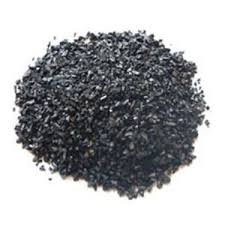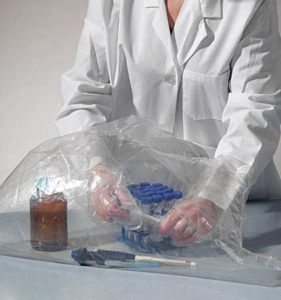Carbon scrubs and other filter media for cannabis oil extracts
 Carbon scrubs can be used to remove color from cannabis oil extract and THC distillate. Other materials are also used as filter media such as diatomaceous earth, fullers earth, bentonite, kaolinite and alumina silicate.
Carbon scrubs can be used to remove color from cannabis oil extract and THC distillate. Other materials are also used as filter media such as diatomaceous earth, fullers earth, bentonite, kaolinite and alumina silicate.
While filter media may remove color from cannabinoids, it may also isomerize or destroy THC and CBD. It’s heartbreaking to hear stories of $10,000 of high-quality crude extract accidentally converted into low potency distillate when using filter media.
This is not an SOP for using filter media and does not address all the possible problems of using filter media.
These are just some suggestions to avoid some specific problems that can occur when using filter media.
Start small.
Test the filter media on a small batch of crude extract and analyze the THC distillate to make sure no isomerization or degradation takes place. This will build confidence before scaling up to larger and more expensive batches.
 Handle in glove bag or fume hood
Handle in glove bag or fume hood
When dry, handle filter media in a glove bag, fume hood or portable clean room. Tiny particles, some too small to see, can be released into the room. If the particles end up in your crude cannabis extract they can cause havoc while distilling the THC distillate.
Rinse with ethanol
Rinsing your filter media with ethanol before using it. Sometimes there are residual acids, bases or other goodies left over from the production of the filter media. Rinsing helps to wash residual materials away and prevents them from ending up in your boiling flask. Any ethanol used to rinse the filter media should be disposed of. Don’t recycle or reuse it.
Before filtering with the filter media, dilute the crude extract with ethanol to reduce the viscosity. Now you are ready. Go ahead and filter the crude extract through the filter media.
Finish prep with Sub-micron Filter
The filtered extract will have picked up some very small particles from the filter media. The tricky part is that they are too small to see. Filter them out before you distill or risk damaging valuable THC/CBD. Use a submicron filter. Smaller is better.
 Handle in glove bag or fume hood
Handle in glove bag or fume hood
May 10, 2019 at 8:37 pm
[…] Source: https://brinstrument.com/blog/cannabis-distillation/four-pitfalls-of-carbon-scrubbing-for-cannabis-e… […]
February 11, 2020 at 11:53 am
[…] Science Source for Carbon Scubbing: https://brinstrument.com/blog/cannabis-distillation/four-pitfalls-of-carbon-scrubbing-for-cannabis-e… […]
August 19, 2021 at 10:45 am
Hi,
How does carbon isomerize or destroy CBD and THC? I have been looking for published articles explaining the phenomenon. Could you share the citation, evidence or explain how carbon (in particular from carbon filters) destroy or isomerize cannabinoids?
Kind regards,
Bella
August 27, 2021 at 1:45 pm
The issue with many sources of carbon is the treatment process they have undergone. This is not just limited to carbon. For example many filter media such as bentonite clays can impart their acidic characteristics onto the oil being processed. Moisture content of the media being used also plays a role. For this reason it is recommended to both completely dry your media and to pre-wash it to removing any manufacturing residues before introducing CBD or THC.
I am not aware of a citation that currently exists. The “accepted” theory is that Lewis acids interact with the double bonds in THC or CBD. In THC this can change from Delta 9 to Delta 8 positioning. In CBD, it causes the bottom ring to close. Of course these reactions can have many side products which is the destruction.
-Luke